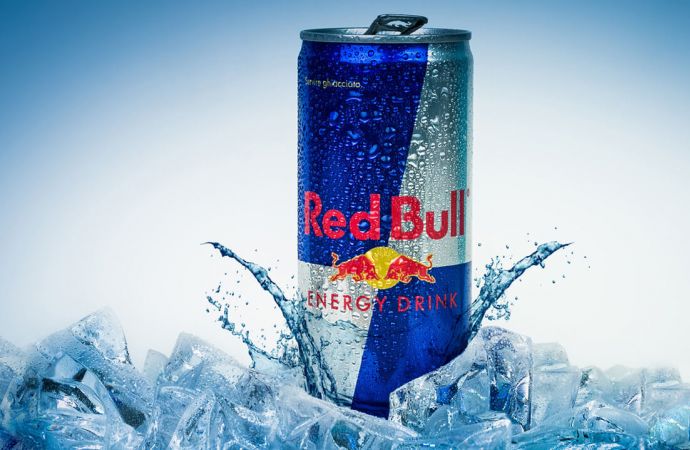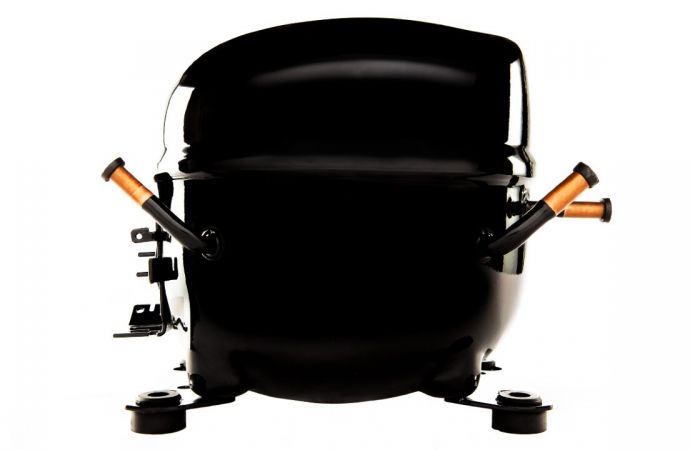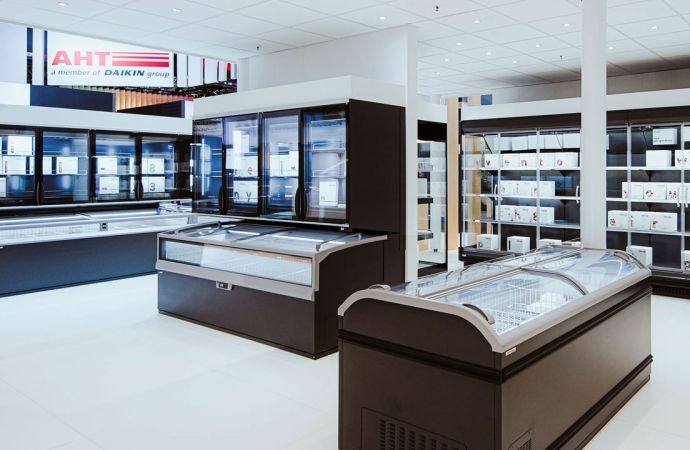The beverage giant’s updated display cases use 43% less energy than its HFC-based 2007 units.

Credit: iStock/bluebeat76
By installing a variable-speed propane (R290) compressor in its refrigerated display cases in 2021, global beverage producer Red Bull has reduced their energy consumption by 43% compared to its 2007 model, and by 8% compared to its 2017 model.
The cases, supplied by Italian OEM EPTA Refrigeration, employ a variable-speed compressor with “Smart Drop-In” technology from Embraco, a brand of Nidec Global Appliance.
These details were shared by Davide Bargero, Marketing Manager F&B for EPTA Refrigeration, at the online ATMOsphere Europe conference, held September 28-29. Bargero was joined by Michael Markert, Head of VISIT Procurement for Red Bull. (ATMOsphere Europe was organized by ATMOsphere (formerly shecco), publisher of Hydrocarbons21.com.
“We are continuously trying to optimize this [cooler] range,” said Markert. “It’s about being efficient and aiming for sustainability.”
In addition to R290, Red Bull employs isobutane (R600a) as a refrigerant, particularly in the U.S. The charge of R290 in the new Red Bull units is 145g.
The variable-speed unit (Embraco FMFT408U) consumes 6.9kWh/day, whereas the 2007 model consumed 12.3kWh/day, said Bargero. The COP for each is 2.34 and 1.43, respectively. The 2021 compressor is also smaller than its 2007 counterpart (8cc displacement vs 12cc).
Bargero noted that variable-speed compressors “adjust to the demand required by the refrigerator, resulting in considerable energy consumption reduction compared to conventional compressors.”
Additional advantages of the variable-speed cases include the ability to withstand network voltage fluctuations; noise-level reduction (62dBA) and reduced stress on compressor mechanical and electrical parts.
Growing market share
Variable-speed hydrocarbon compressors have a modest (17%) market share of plug-in (integral) cases in 2021, but that is projected to grow to 30% in 2025, and to 50% by 2030, according to Marino Bassi, Key Account Senior Advisor for Nidec Embraco, who spoke at another case-study session at ATMOsphere Europe. Last year Embraco noted a growing demand for variable-speed hydrocarbon compressors in medical and scientific refrigeration, driven by the need for energy efficiency, low noise and very tight temperature control.
Other changes Red Bull and EPTA made to the beverage coolers in 2021 include the improvement of condenser-side air flow, the optimization of an air curtain and internal air flow, and the installation of external-environment light sensors and temperature sensors. EPTA is adding “self-adjusting” features that can “optimize the unit without human support,” said Bargero.
Red Bull’s initial EPTA coolers came out in 2007 with R404A as the refrigerant. They converted to R290 in 2009, and were updated with a new design in 2011 and the addition of an energy-saving electronic controller in 2017. The 2021 model holds more 250ml cans (288) than the 2007 model (207).
Asked if the impending higher charge limits for R290 in commercial cases (up to 500g) would improve the efficiency of the cases further, Bargero said they would. “It’s a huge benefit,” he said.
We are continuously trying to optimize this [cooler] range."
--Michael Markert, Red Bull
Want to find out more, or have something to say about this story? Join the ATMO Connect network to meet and engage with like-minded stakeholders in the clean cooling and natural refrigerant arena.
Related stories




